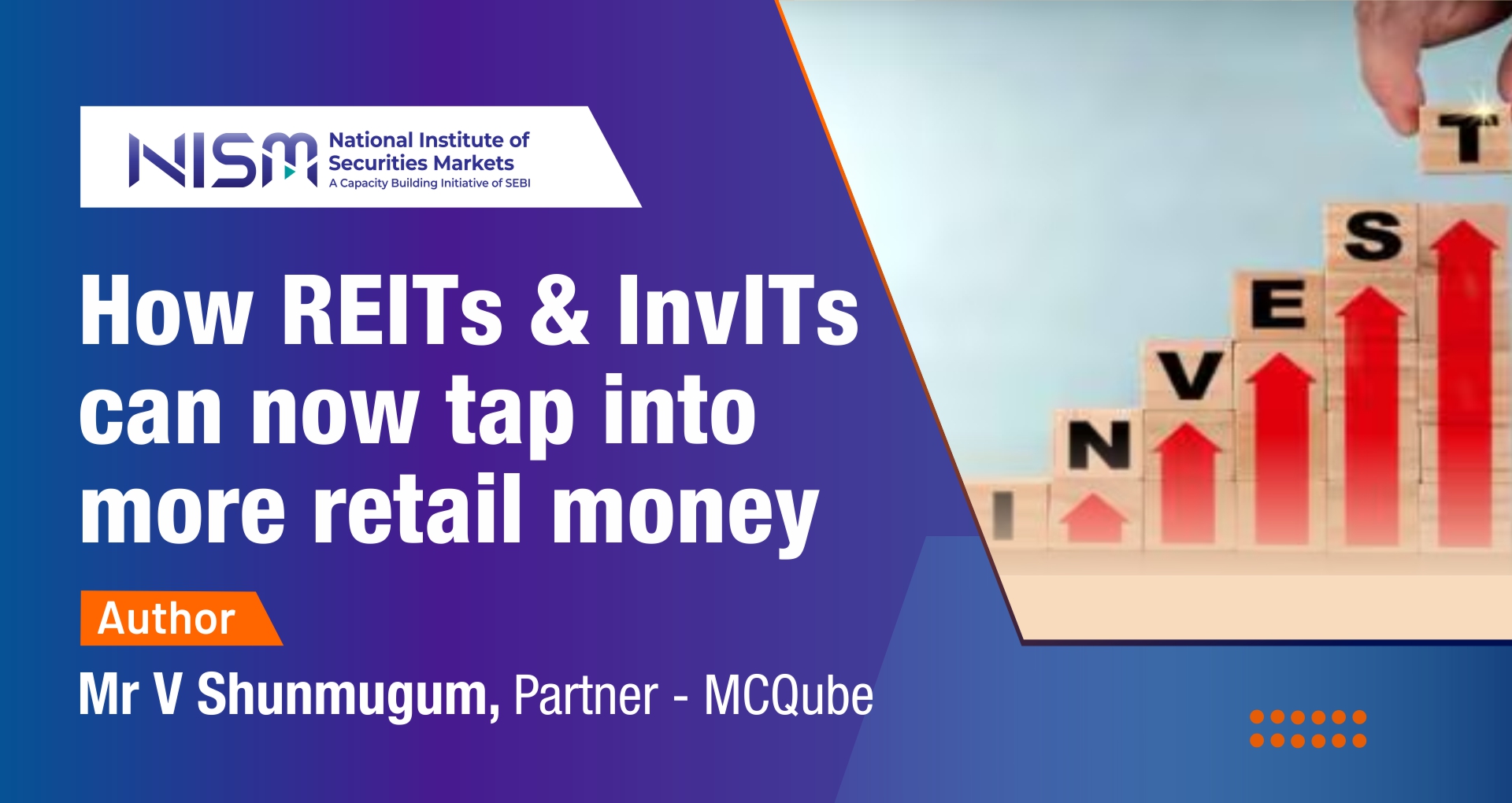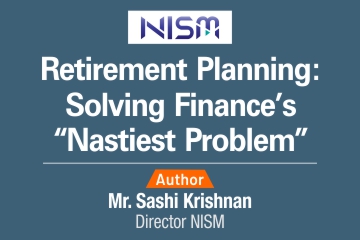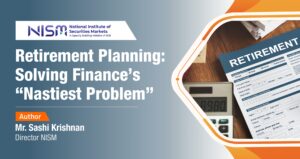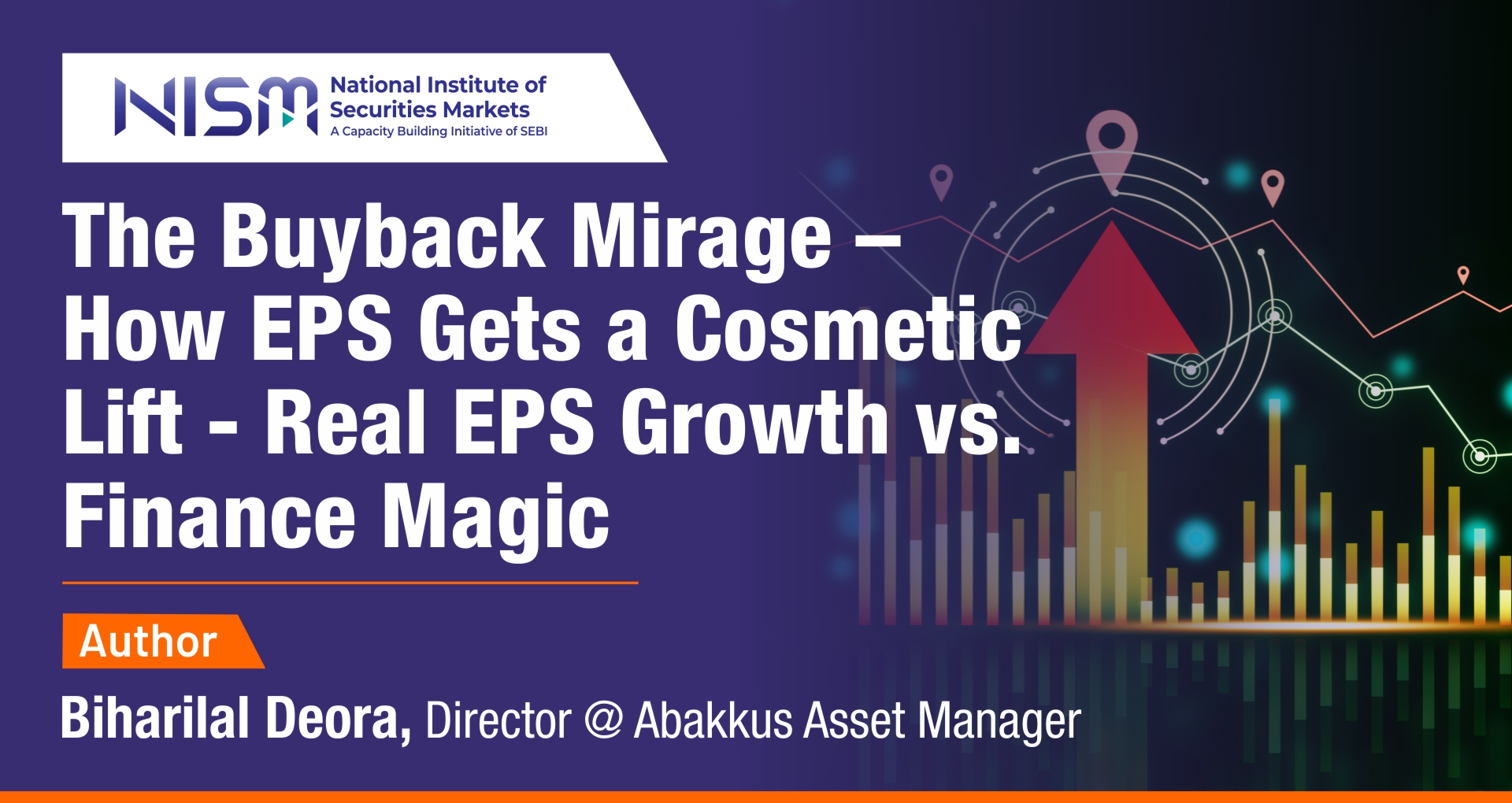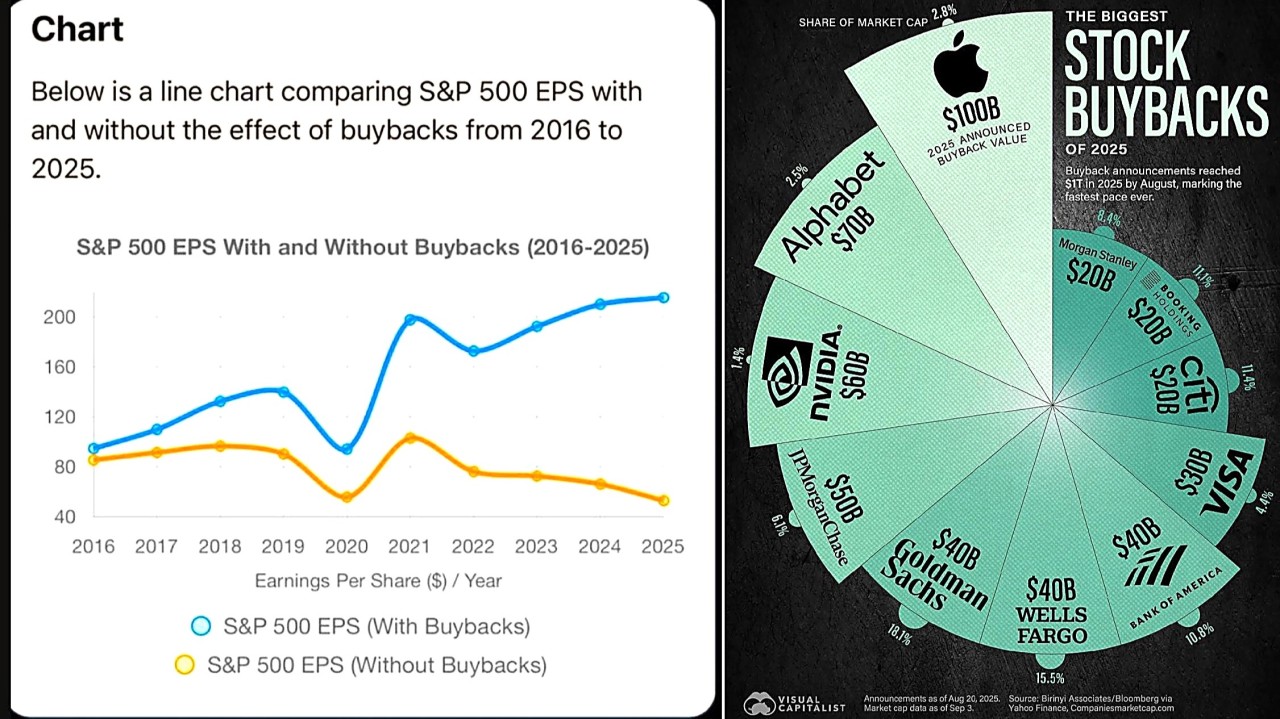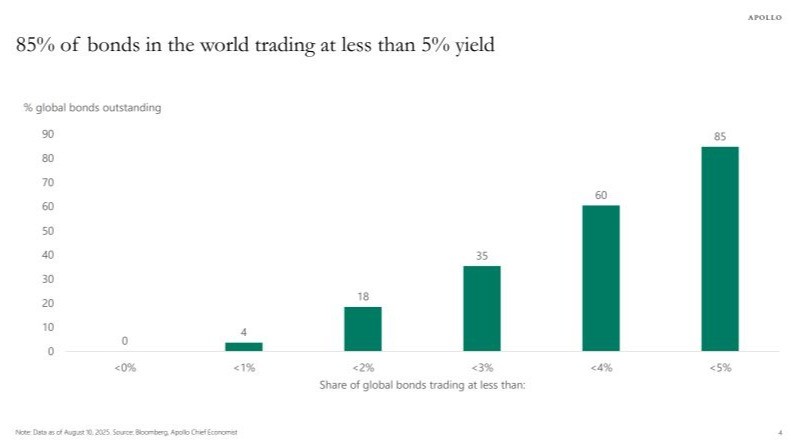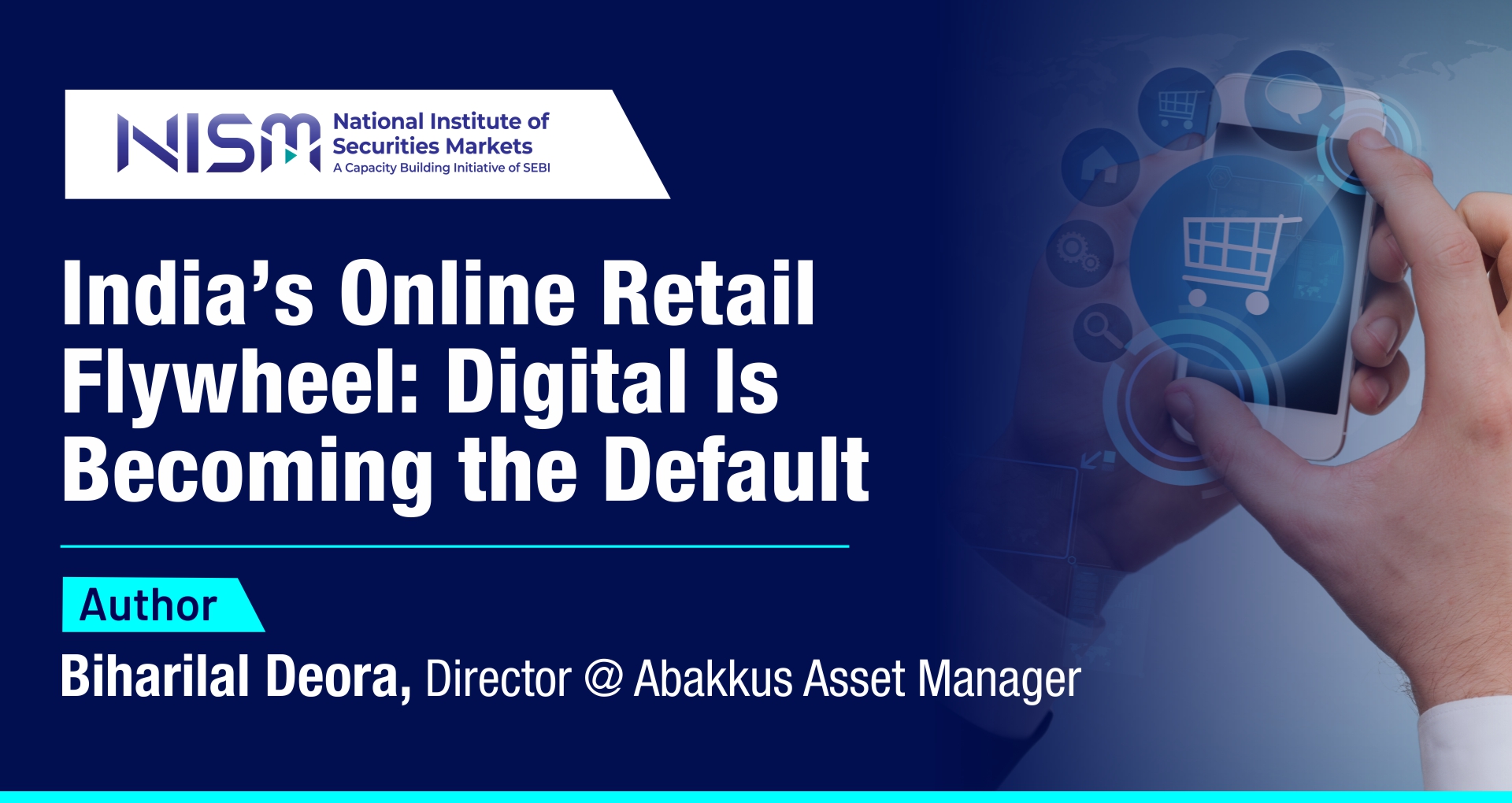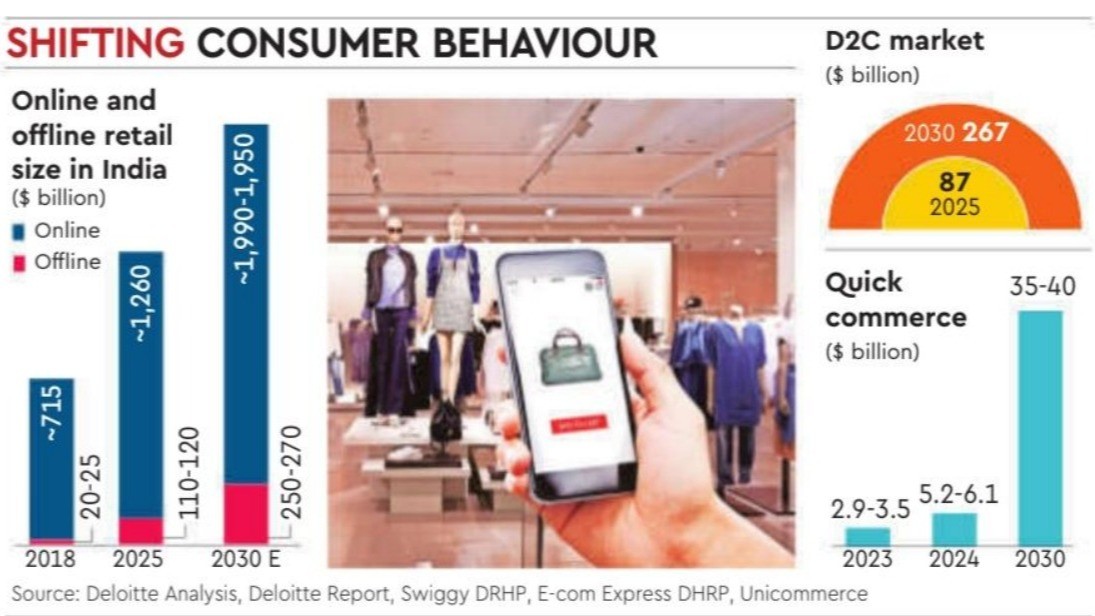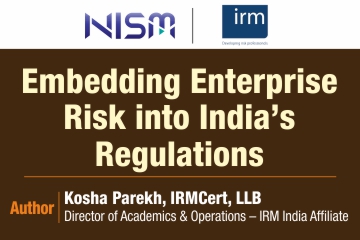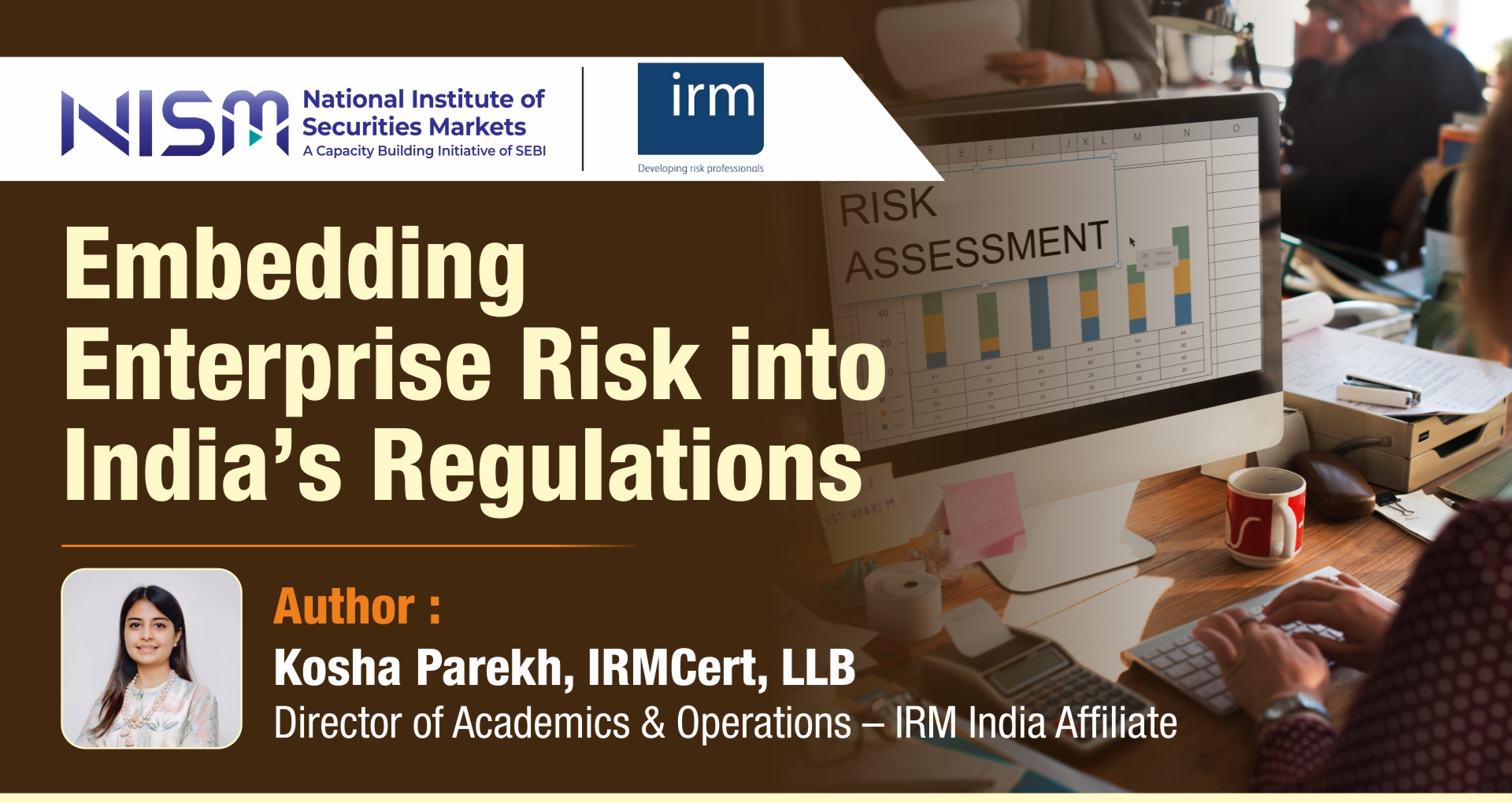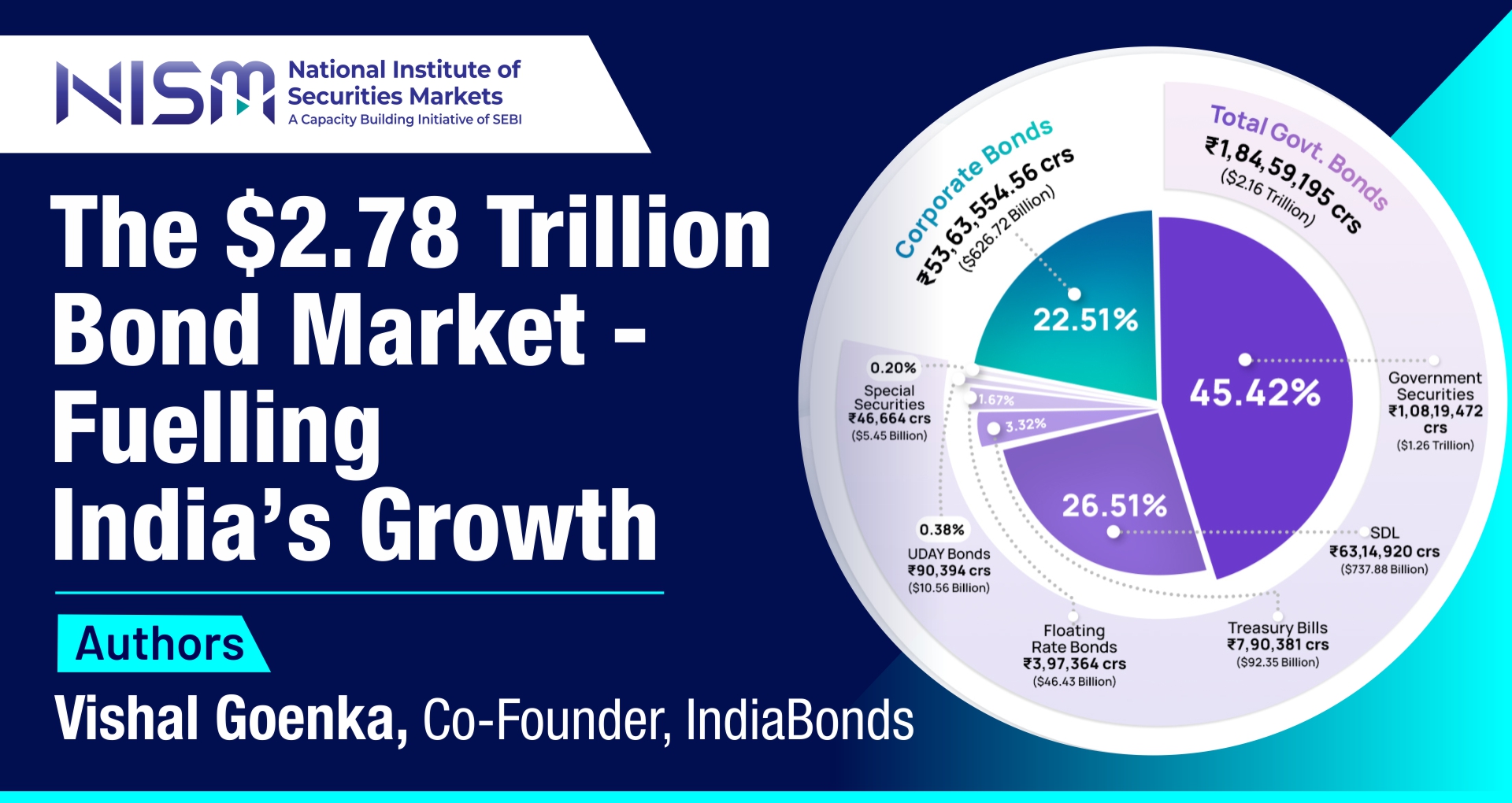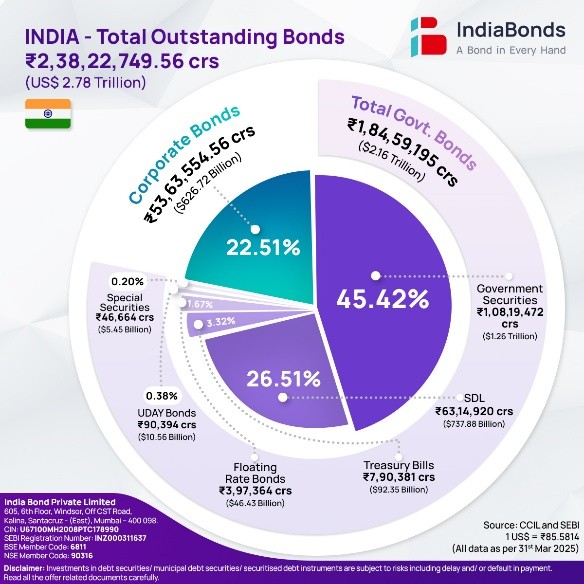
India’s Capital Markets 3.0 – Opportunities and Way Forward
India’s capital markets have entered a new phase of development, building on decades of rapid evolution. Over the past thirty years, the market has progressed through distinct phases – from the foundational digitization of trading in the 1990s (Capital Markets 1.0), to broad-based growth and product expansion in the 2000s and 2010s (Capital Markets 2.0), and now into an emerging era that we might call Capital Markets 3.0. This latest phase is characterized by greater institutional participation, deeper global integration, and the rise of new platforms and instruments that are reshaping how capital is raised and traded.
This article traces the journey from Capital Markets 1.0 and 2.0 into today’s 3.0 landscape. It examines key trends such as the surge in retail investors and demat accounts, the boom in derivatives trading and the regulatory responses it spurred, and the promise and pitfalls in the small and medium enterprise (SME) segment. It also outlines upcoming structural shifts – including the inclusion of Indian bonds in global indices, the expanding role of long-term domestic institutions, and the emergence of innovative avenues for fundraising and risk management. Finally, the discussion places India’s market development in a global context by comparing key metrics with peers like the United States, China, the United Kingdom, and Singapore. The article concludes with recommendations for policymakers and regulators to foster balanced, robust growth of the capital market ecosystem.
Capital Markets 1.0: Laying the Digital Foundations
In the early 1990s, India’s capital markets underwent a fundamental transformation that laid the groundwork for modern trading. Before this period, stock trading was largely manual and confined to regional exchange floors, with paper share certificates and lengthy settlement cycles. The introduction of electronic trading and centralized depository systems revolutionized this landscape. The launch of the National Stock Exchange (NSE) in 1994, with its fully automated trading platform, introduced unprecedented transparency and speed to the market, challenging the traditional broker-run exchanges. Around the same time, the Securities and Exchange Board of India (SEBI) was empowered with statutory authority (in 1992), bolstering regulation and investor protection. A cornerstone of Capital Markets 1.0 was the dematerialization of securities – moving from paper certificates to electronic records. By the late 1990s, the establishment of depositories (NSDL in 1996, followed by CDSL) enabled investors to hold stocks and bonds in dematerialized form, eliminating problems such as lost certificates and delayed transfers. Settlement cycles, which once took weeks, were gradually shortened to a few days. These developments greatly improved market efficiency and connectivity. Nationwide trading networks and internet-based platforms allowed investors across the country to participate in markets remotely. By the early 2000s, India had built a modern market infrastructure – a stark contrast to the earlier era of open-outcry trading – setting the stage for the next phase of growth.
Capital Markets 2.0: Broadening Participation and Product
Expansion With digital infrastructure in place, the 2000s and 2010s ushered in an era of rapid market expansion and innovation. Capital Markets 2.0 was defined by a sharp rise in participation, especially among retail investors, and the introduction of new products and segments that added depth to the market. A pivotal development was the launch of exchange-traded derivatives. NSE introduced equity index futures in 2000, followed by options and singlestock futures. These instruments gained traction quickly, providing new avenues for speculation and hedging. Over the next two decades, India’s derivatives segment exploded in volume, eventually making the country one of the world’s largest derivatives markets by number of contracts traded.
This era also saw steady growth in direct retail investing, aided by rising household incomes and easier access through online brokerages. Demat accounts grew into the tens of millions, and a new generation of techsavvy investors joined the fray, attracted by the ease of trading and periods of strong returns in equities. The primary market experienced cycles of boom and lull: robust IPO issuance in mid-2000s and again around 2016–2018 and 2020–2021, interspersed with quieter periods during economic downturns. A dedicated SME exchange platform was launched in 2012 (BSE SME and NSE Emerge) to enable smaller companies to tap equity markets. Though uptake was initially modest, it laid the groundwork for the flurry of SME offerings that would come in the next decade.
Domestic institutional participation also increased in 2.0, with mutual funds channelling more household savings and foreign portfolio investors (FPIs) becoming significant market drivers after capital account liberalization. Episodes of volatility – such as the global financial crisis of 2008 – tested the market’s resilience, prompting regulators to tighten risk management norms and improve transparency. By around 2020, India’s capital markets had expanded significantly in scale and scope compared to the turn of the century, laying the foundation for the next chapter of evolution.
Capital Markets 3.0: Integration, Institutions, and Innovation
By the mid-2020s, India’s capital markets have entered a new phase – what we can call Capital Markets 3.0 – marked by deeper institutionalization and greater global integration. In this phase, institutional investors are playing a larger role alongside retail. Domestic pools of capital – such as pension funds, insurance companies, and mutual funds – have grown substantially and now provide a more stable base of demand for equities and bonds, often counterbalancing the influence of FPIs. At the same time, foreign investor interest remains high, extending beyond equities into debt as well.
Global connectivity is a defining feature of 3.0. A landmark development is the inclusion of Indian government bonds in major global bond indices, which is set to attract significant foreign inflows and integrate India’s debt markets with global capital. Additionally, the emergence of GIFT City as an international financial center reflects India’s intent to bring offshore financial activities onshore. GIFT City’s exchanges allow trading of certain securities in foreign currency and have become a platform for international investors to access Indian markets with fewer frictions.
Innovation continues to define this era. New tools for fundraising and investment have emerged – from Real Estate Investment Trusts (REITs) and Infrastructure Investment Trusts (InvITs), which unlock capital in real assets, to green bonds and other thematic debt issuances that fund sustainable projects. The regulatory environment has also evolved to enable more sophisticated risk management tools, such as frameworks for credit default swaps and interest rate derivatives, for eligible participants. Essentially, Capital Markets 3.0 involves expanding and deepening the market, making it more diverse in terms of participants and products, and aligning it better with global standards. While this progress offers significant opportunities, it also requires careful oversight to ensure the market develops in a balanced and stable way.
Key Trends Shaping India’s Capital Market Landscape
- Surge in Retail Investors and Demat Account Proliferation:Retail investor participation in India has seen a significant surge in recent years. By early 2025, the number of demat accounts is projected to reach approximately 200 million, marking a rapid expansion driven by several key factors. Technological advancements such as the widespread adoption of e-KYC processes, user-friendly mobile applications, and digital platforms have simplified the account opening process. Additionally, favorable economic conditions, such as low interest rates and increased financial inclusion efforts, have made investment more accessible to the general population.Currently, over 100 million individual investors are active in the Indian retail market, forming a substantial and growing segment. These investors are drawn to positive market trends, the prospect of wealth creation, and the convenience of simplified account setups. Despite this growth, there are inherent challenges. Many new investors lack sufficient experience, which makes them vulnerable to misinformation and impulsive decisions. Consequently, investor education becomes crucial, alongside robust regulatory frameworks to ensure investor protection and maintain market integrity.
- The Rise and Regulation of Equity Derivatives Trading India’s retail trading boom has propelled the rapid growth of its equity derivatives market, led by the NSE, making it one of the world’s busiest exchanges by contracts traded. Driven by retail investors attracted to high leverage and low entry barriers in index options and futures, daily turnover often surpasses underlying cash market activity. However, this surge has raised concerns, as studies reveal many retail traders incur net losses, with losses increasing as volumes grow. Regulators have responded by tightening oversight: increasing margin requirements, raising contract lot sizes, limiting short-term expiries, and mandating clearer risk disclosures from brokerages. These measures have tempered trading volumes somewhat but the market remains highly active. The key challenge now is balancing liquidity and price discovery with retail investor protection, ensuring sustainable growth without undermining confidence. The evolving, data-driven regulatory approach aims to mitigate risks while fostering a resilient derivatives environment.
- SME Listings: High Hopes and Growing Pains The recent surge in SME IPOs, driven by investor enthusiasm and a strong market environment, highlights both opportunities and risks in small business financing. After 2012, SME-specific exchanges experienced low activity until 2023-24, when a speculative craze led to dozens of companies, even those with regional operations or limited earnings history, being oversubscribed by 100 times or more. Such enthusiasm, often driven by social media hype, created a misleading belief of quick, certain profits. However, actual post-listing results showed liquidity shortages and volatile prices, leaving many investors stranded. Recognizing these risks, regulators have implemented measures such as price movement caps and discussions on more extended lock-in periods to reduce extreme volatility and encourage serious, long-term investment. This trend highlights that increasing access to capital must go hand in hand with strict safeguards, good governance, and investor education to ensure the SME platform remains a true engine for growth rather than a bubble.
Structural Changes and Opportunities on the Horizon
- Global Bond Index Inclusion: A New Chapter for Debt Markets
India’s inclusion in global bond indices marks a pivotal milestone. By 2024-25, Indian sovereign bonds could constitute around 10% of emerging-market benchmarks, unlocking an influx of over $30 billion in portfolio investments. This development validates reforms like enhanced market infrastructure and the “Fully Accessible Route,” boosting foreign participation. As passive and active funds realign, liquidity and depth in India’s debt market are expected to improve, potentially lowering borrowing costs and fostering the development of derivatives markets. However, increased foreign exposure may heighten sensitivity to global risk shifts, requiring vigilant macroeconomic management. Overall, this strategic move not only broadens capital access but also accelerates maturity in India’s bond market, supporting economic growth and financial stability. It’s a critical step toward integrating India more deeply into the global financial system.
- Expanding Domestic Institutional Participation
The evolving landscape of the Indian market highlights the increasing influence of domestic institutional investors such as the NPS, provident funds, life insurance companies, and mutual funds. Traditionally driven by foreign portfolio inflows that set market trends, the market now benefits from the growing dominance of local investors, who provide stability and serve as a counterbalance during global volatility. These institutions, with significant surpluses allocated to equities and bonds, have become consistent net buyers, even amid FPI exits, helping to stabilize prices and support long-term growth. This change reduces reliance on foreign sentiment, making markets less vulnerable to sharp swings. For policymakers, promoting domestic institutional investment through favorable regulations, relaxed limits, and greater transparency is essential. Ultimately, a strong domestic institutional presence will deepen liquidity, improve corporate governance, and support sustainable market development.
- New Instruments and Platforms for Growth
India’s capital markets are diversifying with innovative instruments like REITs and InvITs, providing developers alternate avenues to unlock asset-based capital and offering investors steady income and exposure to real estate and infrastructure. These vehicles, initially met with skepticism, are now well-established, attracting both institutional and retail participants, and shaping a new fundraising landscape. Concurrently, reforms aim to invigorate the corporate bond market by relaxing trading and face value norms, and broadening participation through credit default swaps. Municipal bonds, though nascent, highlight local government financing potential. On risk management, derivatives such as currency and interest rate futures are gradually expanding, helping stakeholders hedge against market fluctuations. Collectively, these innovations strengthen the ecosystem, boosting market capacity and efficiency. The key challenge remains scaling these products, ensuring liquidity, and educating investors on associated risks and returns, to fully realize the transformative potential of India’s evolving capital markets.
- India’s Capital Markets in Global Perspective
India’s capital market, valued at over $3 trillion, ranks among the top five globally, reflecting significant financial development. However, relative to its vast economy, market-based financing remains underdeveloped, with Indian firms predominantly relying on bank loans rather than equity or bond markets. This dependence limits potential growth avenues and market efficiency. Household participation is also relatively low; few retail investors directly engage in equities or bonds, constraining domestic investor base expansion. Enhancing financial literacy and promoting inclusion are critical to broadening participation, which could unlock substantial growth opportunities. An increasing number of young Indians entering the investing sphere signals a future where the market could play a crucial role in funding national development. Strengthening regulatory frameworks, encouraging innovative financial products, and deepening market infrastructure will be vital in harnessing this potential. As investor confidence and participation grow, India’s capital market could become a more robust engine for economic growth and development, aligning with its aspirations as a leading global financial hub.India’s financial markets exhibit notable differences when compared to advanced economies. Its equity market capitalization roughly equals its GDP, similar to developed nations, but its corporate bond market remains small—around 20% of GDP—lagging behind the US, Europe, and China, limiting funding options and investment opportunities. Recent initiatives to include Indian bonds in global indices aim to bridge this gap. While India has expanded its financial product offerings— such as derivatives, commodities, and REITs—there’s still room for growth in asset-backed securities and long-term hedging instruments. As the market evolves, these gaps are expected to narrow, fostering a more robust and diverse financial ecosystem.In summary, India’s capital markets are large and dynamic, but they still have considerable potential when compared to peers. Recent macroeconomic stability and reforms have built a solid foundation. Continuing to expand participation, deepen the debt markets, and diversify instruments will help India approach the scale and efficiency of more established global markets, while supporting higher investment and growth home.
Way Forward: Ensuring Balanced Market Development
To seize the opportunities of Capital Markets 3.0 while managing risks, stakeholders must adopt a proactive and balanced approach. Key recommendations include:
- Strengthen Market Infrastructure and Resilience: As trading volumes and complexity increase, exchanges and clearing corporations should consistently upgrade their technology and risk management systems. Reliable trading platforms with backup systems and robust clearing safeguards— such as sufficient margins, stress testing, and default funds—will help maintain stability even during periods of volatility. Regulators and market institutions must collaborate on surveillance and data analysis to identify and resolve vulnerabilities promptly.
- Deepen and Diversify the Bond Market: Reducing over-reliance on bank credit requires a vibrant corporate bond market. Policymakers should promote greater public bond issuance by simplifying regulations and offering credit enhancements to lower-rated issuers, thereby facilitating their access to markets. Allowing institutional investors, like insurers and pension funds, greater flexibility to invest in a broader range of debt instruments with proper risk controls can direct more long-term funds into corporate bonds. A more developed debt market will give companies alternative ways to raise funds and provide investors with more fixed-income options.
- Enhance Investor Protection and Literacy: With millions of new retail participants, investor education becomes crucial. Regulators and exchanges should expand financial literacy programs that cover the basics of investing, risk management, and fraud prevention. At the same time, they should enforce strict disclosure and suitability rules, ensuring complex or high-risk products are only sold to investors who understand them. Vigorous enforcement against malpractices, such as insider trading and mis-selling, along with transparent communication about market risks, will help preserve trust as the investor base expands.
- Facilitate Innovation with Safeguards: Embrace financial innovation by enabling new products and fintech platforms to develop within regulatory sandboxes or pilot frameworks. Whether it involves new digital trading mechanisms or innovative instruments, a proactive approach can help keep Indian markets competitive. However, pair innovation with clear guardrails, such as closely monitoring algorithmic and high-frequency trading for fairness and requiring thorough risk assessments for complex derivatives. This way, efficiency gains can be achieved without compromising market integrity.
- Promote Balanced Growth and Consistent Policies: Policymakers should promote balanced development across all parts of the capital market. This involves preventing any single segment (such as short-term speculative trading) from overshadowing the primary roles of capital formation and long-term investment. Specific measures, such as updating SME listing standards and increasing oversight when necessary, will help new segments grow on a healthy foundation. Lastly, maintaining a stable and predictable regulatory and tax environment, especially for foreign investors, is essential. Consistent policies will attract steady, long-term capital, both domestic and foreign, and reduce disruptive changes, supporting a healthy, broad-based market evolution.
Originally Published in The PRIME Directory-2025.
Author: Dr. V. Shunmugam – Partner MCQube



